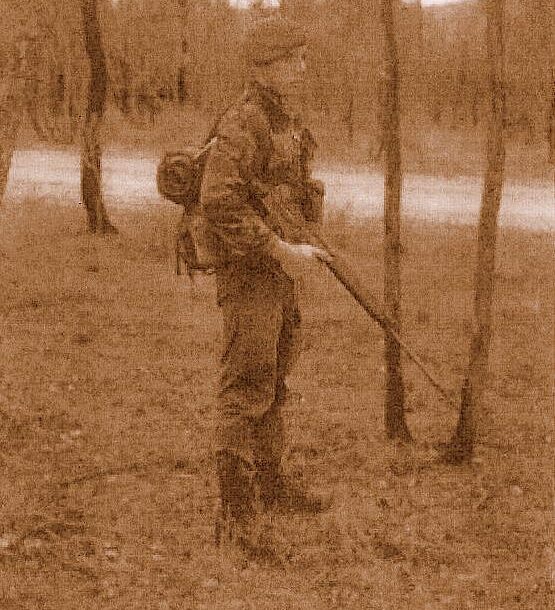We provided copies of testimonials from a former fellow Staff Cadet Steven Ridd at RMC Duntroon who attended in the same intake as Staff Cadet Julian Knight from January 1987.
These two documents are relevant to this particular case, and more broadly to the backstory of Julian Knight, because Mr Ridd had also served in military training briefly (January to March 1987) as a Army Officer Staff Cadet at the Royal Military College at Duntroon alongside Mr Knight as part of the same January 1987 intake of 3rd Class (junior) cadets.
The course at Duntroon has a 18 month duration to graduate as a Second Lieutenant, divided into three 6-month training stages, commencing with 3rd Class, than advancing to 2nd Class and finally 1st Class before graduation and then Army Corp allocation. Duntroon at the time had five training companies, respectively and appropriately named after famous Australian war battles, in order: ‘Gallipoli’, Kokoda, Alamein, Kapyong, and Long Tan.
Mr Ridd was selected as one of just three of that intake with an ‘Aviation Cadetship’, which meant that he had pre-selected for the Army Aviation Corp to fly Australia’s only military helicopters upon successful graduation from Duntroon. In that particular January 1987 intake of around just 100 3rd Class staff cadets, Staff Cadet Ridd had been assigned to the same infantry training Kokoda Company, same 15 Platoon, same Section 45 as Staff Cadet Knight. Within that Section 45, there were just three 3rd Class (junior) cadets – Julian Knight, Steven Ridd and Chris Whitting. This meant that these three were placed in close companionship with each other in almost all training – on college grounds, in field exercises and in barracks living quarters. Each cadet had his/her own room. The three were on the same ground floor of Kokoda Company barracks and in close proximity.
Mr Ridd has stated that he and Julian became close buddies by the nature of their same sectional assignment by Duntroon’s Brass and then by the trusted bond they then established during training together at Duntroon in those first few months.
As introductory summary of each document:
Document 1: Staff Cadet Ridd’s Account
[6 pages]
The first document is a copy of a blog post article dated 7 March 2012 and authored by Steven Ridd, but using anonymous pseudonym ‘Tigerquoll’. The article is entitled ‘RMC Duntroon officer training perpetuates a dangerous bullying culture’. It was published on an Australian political activist online blog called ‘(We) can do better‘ at https://candobetter.net/node/2813 , which is still active. The internal webpage path to the blog post article Home › Blogs › Tigerquoll’s blog.
For the record, our contributor Steven Ridd ha confirmed that the original article was written and published by himself online on blogsite ‘(We) can do better‘ at the same time. He has explained that the reason for the gap of 25 years between when he resigned from Duntroon in 1987 and writing this article in 2012, is complex, disturbing, cathartic and timely. However, he says that a full explanation would require another such article, but it was sparked by the April 2011 reporting to the media by ADFA Cadet ‘Kate’, a victim of ADF Abuse – the ADFA Skype Sex Scandal. This Mr Ridd intends to write and publish a full explanation on this website: https://julianknight.com.au in due course. When that occurs, we shall provide an internal shortcut hyperlink to the explanatory article at this location.
Document 2: Staff Cadet Ridd’s Affidavit
[38 pages]
Following the 2012 online publication of the above blog post article, it gained online traction from a few researchers into Defence Force abuse. In September 2014, Julian Knight managed to receive a printed copy of the article.
However, it wouldn’t be until some six years later in 2020 that the two 3rd Class Staff Cadet buddies Steven Ridd and Julian Knight would again hook up via post after 33 years absence and half a lifetime. This eventually happened following attempts by Mr Ridd, in Civvy Street to re-establish contact Mt Knight in Maximum Security Prison and denied Internet access.
A year later on 26 March 2021, Mr Ridd posted this printed original Affidavit of his to Mr Knight in prison in support of Mr Knight’s legal appeal to the Defence force Ombudsman was supplied in response to Mr Knight being rejected reparations by the Defence Forces Reparations Taskforce and the Defence Force Ombudsman for his detailed claim of multiple instances of ADF abuse which Mr Knight endured at Duntroon in 1987. Mr Ridd had been a close witness at the time and his detailed evidence was in support of Mr Knight’s appeal case. [Signed and dated 26th March 2021 and submitted as evidence for the applicant Julian Knight [Case: KNIGHT and COMMONWEALTH OMBUDSMAN, No. 2017/5456] in the Administrative Appeals Tribunal held Monday 3rd May 2021 in Melbourne, Victoria].
The images have been subsequently added on this website to enhance readability.
In this voluntary affidavit, written some 34 years after Mr Ridd had long resigned from Duntroon after just 2 months into 3rd Class, Mr Ridd from his memory offered to elaborate and corroborate in frank and open manner about his training experiences as a staff cadet at Duntroon and of his short association with then staff cadet Julian Knight. He has contributed this to this website voluntarily.
It helps serve to provide a uniquely valuable insight into the backstory of Julian Knight’s experience and treatment at Duntroon as a junior 3rd Class staff cadet as well as personal insight into the Duntroon Bastardisation culture. That short period was to precede Mr Knight’s Hoddle Street Shooting Spree of 9th August 1987.]
Read these testimonies by the same former RMC Duntroon Army Officer Staff Cadet Steven Ridd.
Copies of each are reproduced in full and included on this website as ‘child’ (sub) webpages of this webpage, with the following shortcut internal links for reader convenience:
(1) > Staff Cadet Ridd’s Account
(2) > Staff Cadet Ridd’s Affidavit
(3) > Staff Cadet Mother’s Account

